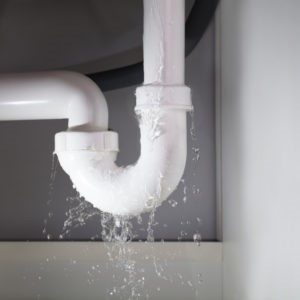Plumbing problems can happen suddenly and with a severity that can border on catastrophic. However, regular checks of your plumbing can help identify problems before they turn into emergencies. The good news is you don’t have to be a skilled plumber to check the fixtures for damage!
Follow this guide to help you hit all areas of your home – and ensure that your plumbing fixtures are working properly and without damage.
What to Check in the Bathroom
Bathrooms have a lot of places where plumbing could go very wrong. Every member of the household uses the bathroom, which means the fixtures in this room get the most use.
- Start with the faucets. Check all faucets including the sink, tub, and shower. You want to check for any leaks or drips. If you notice the faucets are leaking, replacing bad washers or cartridges typically take care of the problem. If you notice weak water pressure from any of the faucets, it may be a sign that the pipes hidden behind the walls are leaking. At this point, it is time to call in a professional plumber.
- Check the drains next. Again, you want to check the tub, shower, and sink. These drains tend to be a magnet for soap and hair clogs. Before a problem can occur, you may consider investing in hair traps that will prevent hair from going down your drains. If this isn’t an option, disassembling the drain traps every six months and cleaning out hair and debris.
- A toilet check consists of removing the tank lid and watching what happens when you flush the toilet. If the toilet continues to run after flushing, you’re wasting water. You can fix this problem easily by tightening the chain on the inside of the toilet. You also want to check the base of the toilet for leaking water – if there is water at the base, the wax ring needs to be replaced.
- Check the caulk around your tile and tub. Caulk isn’t plumbing, but it does stop water from seeping behind your walls. Water that is sitting for long periods of time can lead to mold growth, which is a big problem that no homeowner wants to deal with.
What to Check in the Kitchen
The kitchen is also heavy in plumbing fixtures and is similar to the bathroom.
- Check the sink drains for slow drainage. If you notice a clog, you can use a snake to remove the issue. Cleaning your drains regularly using a drain cleaner can help break up any buildup and prevent clogs and drainage problems as well.
- A faucet check in the kitchen is basically the same thing as the bathroom. Watch for leaky faucets or regular drips, and tighten faucets, replace washers, etc. if necessary.
- Check the garbage disposal. If the connection from the disposal to the dishwasher is loose, water can begin to leak. Since this is not out in the open, the water will go unnoticed for a long period of time, leading to bigger problems.
- The dishwasher is a common cause of leaks and other plumbing issues. Watch and listen to your dishwasher while it is running. If you notice the dishwasher is slow to fill, there may be an issue with the valve that controls the water supply. Drainage issues could be caused by a block in the discharge hose.
What to Check for Outside the Home
Plumbing isn’t found only inside your home. To prevent leaks from occurring outside, check all spigots and sprinkler systems for any problems.


